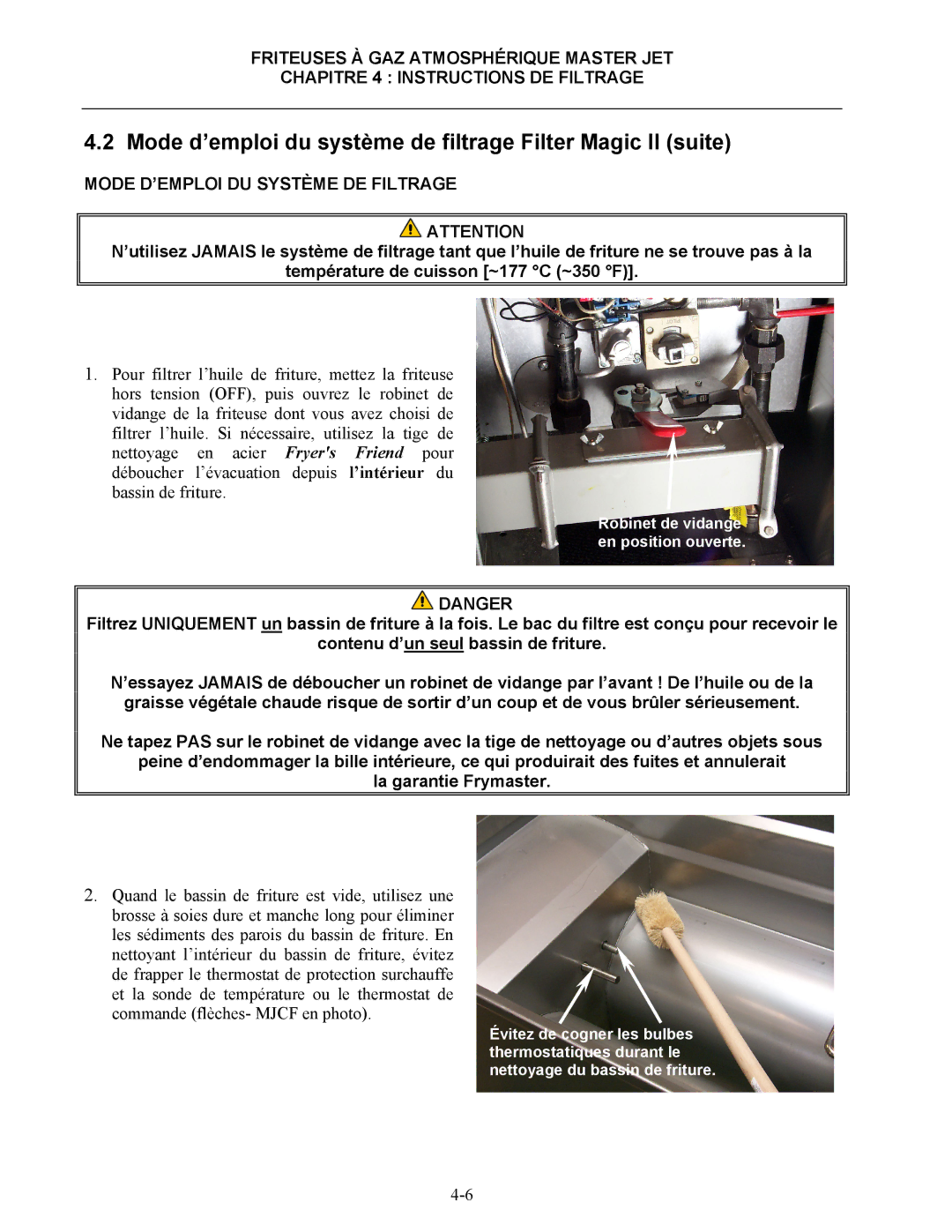CF specifications
The Frymaster CF series is a highly regarded range of commercial fryers designed to meet the diverse needs of food service establishments. Known for their efficiency, reliability, and advanced technology, Frymaster CF fryers are ideal for restaurants, cafeterias, and other food outlets that require high-volume frying capabilities.One of the standout features of the Frymaster CF series is its innovative oil management system. This system optimizes oil usage by extending oil life, reducing waste, and ultimately lowering operational costs. The fryers are equipped with a built-in filtration system that automatically filters the oil during the frying process, ensuring that food is cooked in clean oil, which enhances flavor and quality. This filtration system also allows for faster recovery times between batches, increasing productivity and service speed.
Another significant technology incorporated in the Frymaster CF fryers is the advanced digital control panel. This user-friendly interface provides precise temperature control and monitoring, which ensures consistent cooking results and minimizes the risk of overcooking or undercooking. Operators can easily set and recall cooking times and temperatures for various menu items, enhancing efficiency and training new staff.
The Frymaster CF series is designed with safety and ergonomics in mind. The fryers feature built-in safety mechanisms, including automatic shut-off systems and high-limit temperature controls, which help prevent accidents and maintain optimal frying conditions. Additionally, the fryer’s design allows for easy access to the oil reservoir and heating elements, making routine maintenance simple and straightforward.
Energy efficiency is another key characteristic of Frymaster CF fryers. Many models feature ENERGY STAR certification, indicating that they meet strict energy efficiency guidelines. This not only reduces operational costs but also minimizes the environmental impact of food service operations.
The Frymaster CF series offers versatility with options for both electric and gas models, catering to different kitchen setups and preferences. Whether frying donuts, chicken, or French fries, these fryers deliver exceptional performance across a wide array of food types.
In summary, the Frymaster CF series stands out in the crowded commercial fryer market due to its innovative oil management system, advanced digital controls, safety features, energy efficiency, and versatile configurations. These attributes make it a preferred choice for food service operators seeking to maximize productivity, streamline operations, and maintain product quality.

